Over the last couple of years, bluefin numbers seem to have made some what of a resurgence. Commercial fishing for northern bluefin is now highly restricted and in southern states, southern bluefin are being caught in larger numbers and at record weights. So with this increase in bluefin numbers, of both varieties, and a renewed interest from recreational anglers, let’s have a look at cleaning and preparing bluefin tuna for the table.
This step is a bit of a ‘no brainer’, but as soon as you land any tuna it needs to be bled to optimise flesh quality. Tuna die so quickly when they’re taken out of the water, you need to get the blood out before the heart stops pumping completely. To do this, make a cut in behind the gills, starting at the top of the head and then running down the arc just behind the gill rakers until you reach the base of the head. Next, make a cut across the base of the tail on both sides of the fish where the tail meets the body so that the natural ‘vacuum’ of the fish’s body is broken. When all this is done correctly, you’ll know – because nothing bleeds quite like a tuna.
Next step is to take a fillet off both sides of the fish using a sharp filleting knife. Tuna fillets are generally high yielding, so take your time and get as much flesh on the fillets as possible.
Once you have the fillet off, you’ll notice a distinct thick blood line running down its lateral length. To remove this, make an incision on either side of the blood line so that the two incisions create a ‘V’ shape.
The blood line runs in a ‘V’ shape pretty much right through to the skin side of the fillet. Again, take your time, and try not to remove too much of the ‘good flesh’ when dealing with the blood line.
Using your fingers, locate the rib cage and work the edge of blade between the flesh and the ribs until it cuts completely free.
Tuna isn’t a species that can be scaled. They have a thick outer skin which needs to be totally removed. Rather than skinning the fillet as a whole, make a series of vertical cuts through the flesh, sectioning the fillet into a number of meal sized segments, but make sure you don’t cut through the skin. Then, rotate the knife and run it between the flesh and the skin removing each of the segments. This is a much easier and better method of removing the skin from larger fillets rather than trying to remove it all in one go.
Now all you need to do is remove any untidy pieces of flesh or pieces of the blood line that you may have missed.
A quick wipe down with paper towel and they’re ready to cook! Remember; always avoid rinsing salt water fish with fresh water when possible, it can be the quickest way to ruin flesh texture and taste.
Step 2
Step 3
Step 4
Step 5
Step 6
Step 7
Reads: 9419
(As above)

(As above)
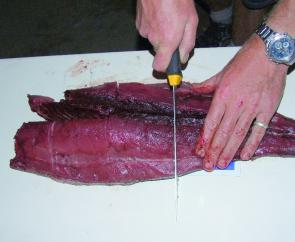
Cut the flesh into meal size portions without cutting through the skin.
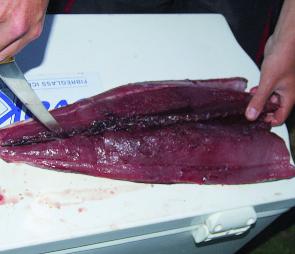
(As above)
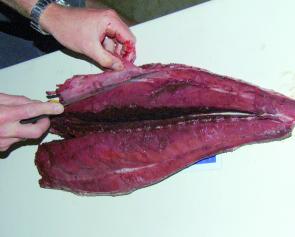
Work the blade between the rib cage and the flesh until it’s completely removed.

As above)
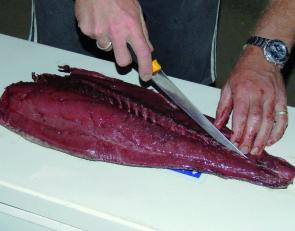
Making a ‘V’ incision along the lateral length of the fillet to remove the blood line.
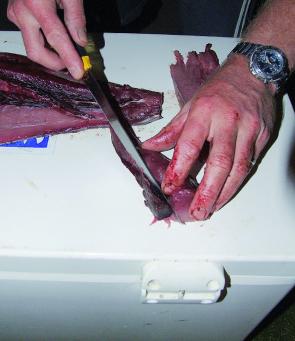
Remove any untidy pieces of flesh or blood line.
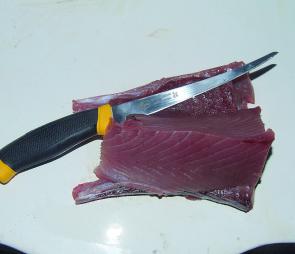
All done and ready for the table!

(As above)

Take a fillet of each side.




